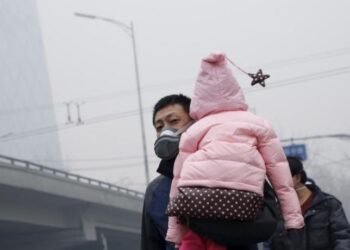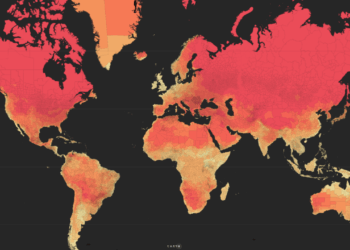Puberty marks a critical transformation from childhood to adulthood, characterized by physical growth, hormonal changes, and psychosocial development. Traditionally, children entered puberty in their early teens, but recent decades have witnessed a troubling trend: puberty is beginning increasingly earlier. A growing body of evidence suggests that everyday scented products—such as lotions, shampoos, perfumes, and air fresheners—may accelerate this process. This article explores the science behind this link, outlines potential health implications, and provides practical strategies for reducing exposure to harmful chemicals.
Understanding Puberty and Its Timing
Puberty involves the activation of the hypothalamic–pituitary–gonadal (HPG) axis, leading to increased sex hormone production (estrogen in girls, testosterone in boys). Typical age ranges are:
A. Girls: 8–13 years
B. Boys: 9–14 years
Early puberty, or precocious puberty, is defined as onset before age 8 in girls and before age 9 in boys. Signs include breast budding, pubic hair, accelerated growth spurts, and changes in body composition.
What Are Scented Products?
Scented personal care products and household items are formulated to emit pleasant fragrances. Common categories include:
A. Personal Care: Perfumes, colognes, lotions, shampoos, conditioners, body sprays
B. Home Fragrance: Air fresheners, scented candles, diffusers, room sprays, potpourri
C. Cleaning Products: Laundry detergents, fabric softeners, dish soaps, multi-surface cleaners
Manufacturers often use synthetic fragrance blends containing dozens—or even hundreds—of chemicals, many of which remain undisclosed on labels due to trade-secret protections.
Chemical Culprits: Endocrine Disruptors in Fragrances
Several fragrant compounds can mimic or interfere with natural hormones, classifying them as endocrine-disrupting chemicals (EDCs). Notable offenders include:
A. Phthalates: Used as solvents and fixatives; linked to altered reproductive development and hormone levels.
B. Bisphenol A (BPA): Found in some packaging, can leach into products; associated with early breast development.
C. Synthetic Musks: Employed for long-lasting scent; may accumulate in fatty tissues and disrupt hormone signaling.
These EDCs can enter the body through skin absorption, inhalation, and accidental ingestion, accumulating over time.

The Science Linking Scented Products to Early Puberty
Recent studies have highlighted correlations between EDC exposure and premature pubertal onset:
A. Urinary Biomarker Studies: Elevated phthalate metabolites in urine samples of girls aged 6–8 were significantly associated with earlier breast development.
B. Animal Models: Rodent experiments demonstrate that prenatal or early-life exposure to certain phthalates accelerates vaginal opening and alters estrous cycles.
C. Cellular Research: In vitro assays reveal that synthetic musk compounds can bind estrogen receptors, triggering gene expression patterns akin to natural estrogen.
While causality in humans remains under investigation, the convergence of epidemiological, animal, and cellular data underscores a plausible mechanism.
Potential Biological Mechanisms
Endocrine disruptors may hasten puberty via several pathways:
A. Receptor Binding: EDCs mimic estradiol or testosterone, binding to hormone receptors in the brain, ovaries, or testes, prematurely activating the HPG axis.
B. Enzymatic Interference: Some chemicals alter aromatase or 5α-reductase activity, shifting the balance of androgen and estrogen synthesis.
C. Hypothalamic Regulation: Disruption of hypothalamic neuropeptides (e.g., kisspeptin) can trigger early GnRH (gonadotropin-releasing hormone) pulses, initiating puberty ahead of schedule.
Health Implications of Precocious Puberty
Early pubertal onset carries physical, emotional, and social consequences:
A. Physical Risks: Shorter adult height due to early closure of growth plates; increased risk for metabolic syndrome, cardiovascular disease, and certain cancers (e.g., breast, prostate).
B. Psychological Impact: Heightened risk of anxiety, depression, low self-esteem, and body image issues among early-developing children.
C. Behavioral Concerns: Early puberty often correlates with risk-taking behaviors, such as substance use and unsafe sexual activity.
Reducing Exposure to Harmful Fragrances
While eliminating all fragrances may not be feasible, families can take targeted steps:
A. Read Labels Carefully: Look for “fragrance-free” or “unscented” products rather than “low fragrance,” which may still contain maskers.
B. Choose Natural Alternatives: Opt for products scented only with essential oils, ensuring no synthetic phthalates or musks are present.
C. Ventilate Living Spaces: Regularly air out rooms, use HEPA filters to reduce airborne EDCs, and avoid continuous diffuser use.
D. DIY Cleaning Solutions: Homemade cleaners using vinegar, baking soda, and lemon juice can replace many scented commercial cleaners.
E. Wash New Clothing: Launder garments before first wear to remove residual finishing chemicals, fragrances, and dyes.

Practical Tips for Parents and Caregivers
Beyond product choices, adopt lifestyle habits that minimize overall EDC burden:
A. Nutrition: Emphasize a diet rich in antioxidants (berries, leafy greens) to support detoxification pathways.
B. Regular Physical Activity: Exercise can help modulate hormone levels and promote healthy growth trajectories.
C. Toy Selection: Choose BPA- and phthalate-free plastic toys; prioritize wooden or certified-safe materials.
D. Water Quality: Use certified filters to remove endocrine-disrupting contaminants, including some bisphenols and heavy metals.
E. Awareness and Advocacy: Stay informed about local and national regulations on chemical use; support policies that increase labeling transparency.
Monitoring and Early Intervention
Early detection of precocious puberty allows for medical management:
-
Regular Checkups: Pediatric visits should include growth chart monitoring and Tanner staging when appropriate.
-
Hormonal Assessments: Blood tests for luteinizing hormone (LH), follicle-stimulating hormone (FSH), estradiol, and testosterone can confirm early HPG activation.
-
Specialist Referrals: Endocrinologists may recommend GnRH analog therapy to delay further development until an appropriate age.
Conclusion
The link between scented products and early puberty underscores the profound influence of environmental exposures on child development. By understanding the science, recognizing potential risks, and implementing practical interventions, families can help safeguard their children’s healthy maturation. Transitioning to fragrance-free or naturally scented alternatives, improving home ventilation, and advocating for greater transparency in product labeling are essential steps toward mitigating premature hormonal shifts. As research continues, informed choices and proactive healthcare remain the foundation for balancing daily convenience with long-term well-being.











